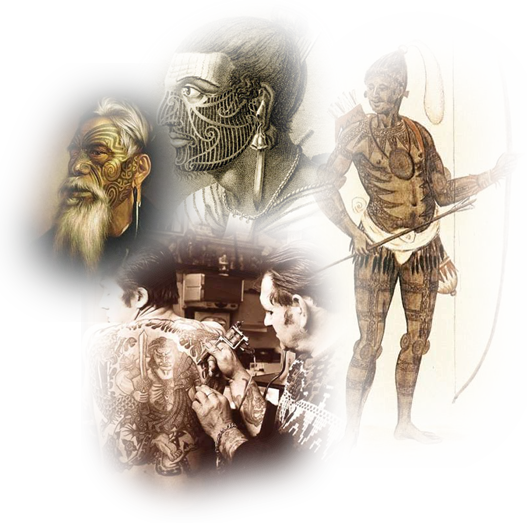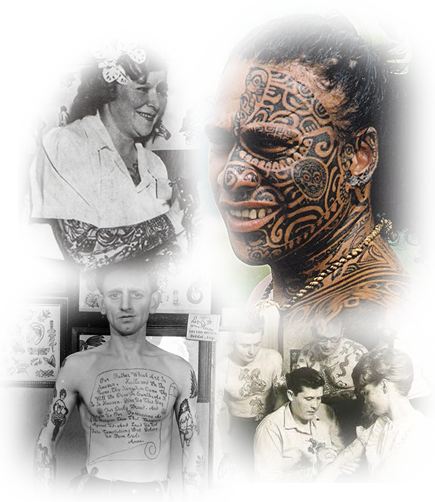
Tattooing is a usually permanent form of body alteration with ink marks. “Tattoo” comes from the Tahitian word “tattau”, for “to strike or hit”, referring to the pricking motion of the needle or bone that pushes the ink deep into the skin. Most cultures have a history of tattooing.
The earliest (known) tattoos were amulets protecting the wearer against pain or danger.
– The oldest known tattooed human is Otzi the “Iceman”, a 5,200-year-old mummy found near frozen in the Alps near the Italian-Austrian border. Otzi wears 57 dots and small crosses over his lower spine and on the joints of his right knee and ankle. Because on these spots Otzi’s bones were strained and deteriorated, scientists speculate that the tattoos were applied there to alleviate and/or ward off pain.

– In Egypt, tattooing was a female practice. Figurines from 4,000 B.C. and female mummies from 2,000 B.C. display tattoos conspicuously concentrated on the abdomen and thighs. They are probably not a prostitute’s protection against sexually transmitted diseases, but rather amulets for women during pregnancy and childbirth. Imagine a net of dark dots that, as the pregnancy progressed, expanded around the belly/baby. Other images are of the deity Bes, the protector of laboring women. It is not known if this was common among all women or reserved for the privileged.